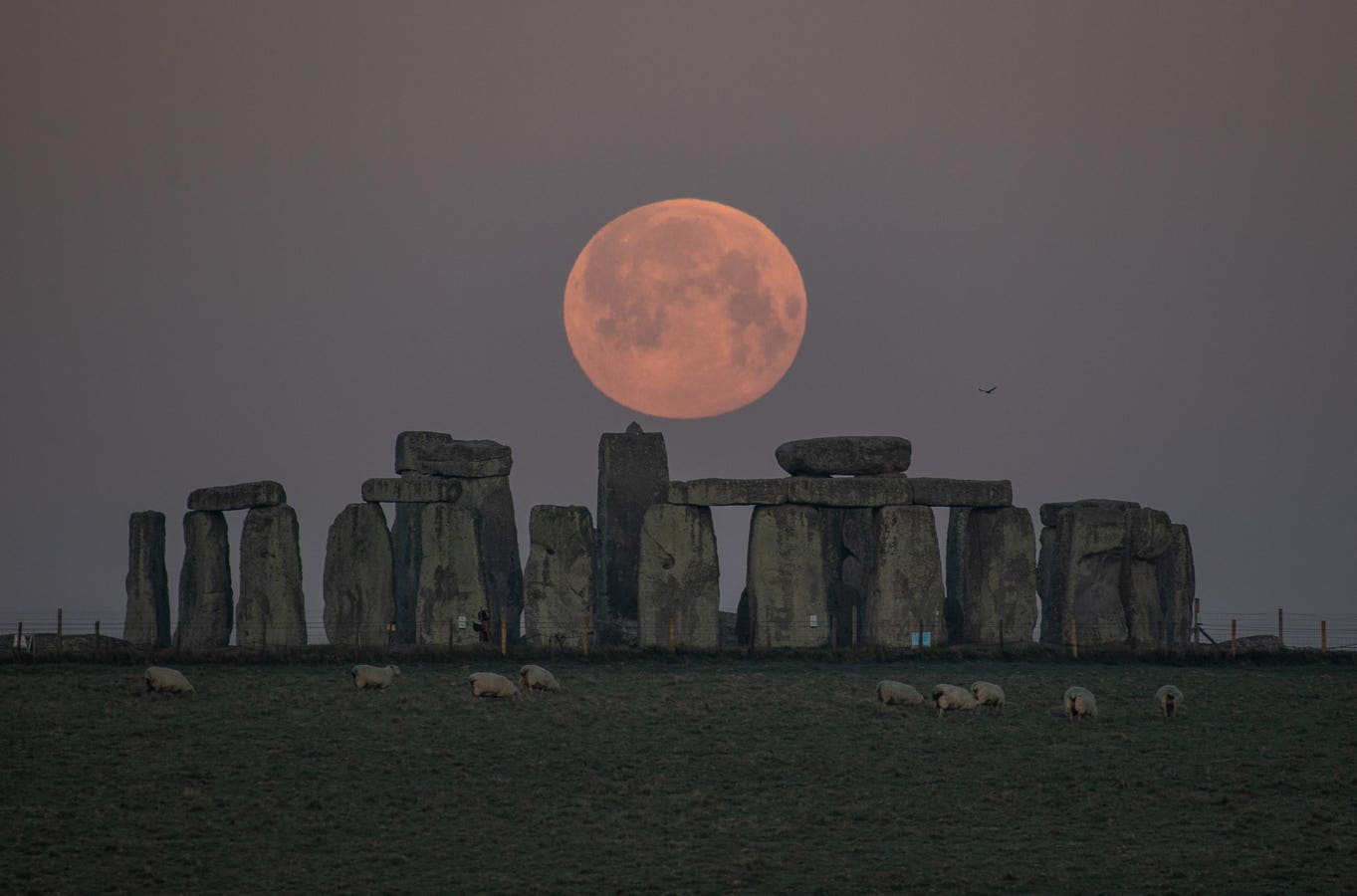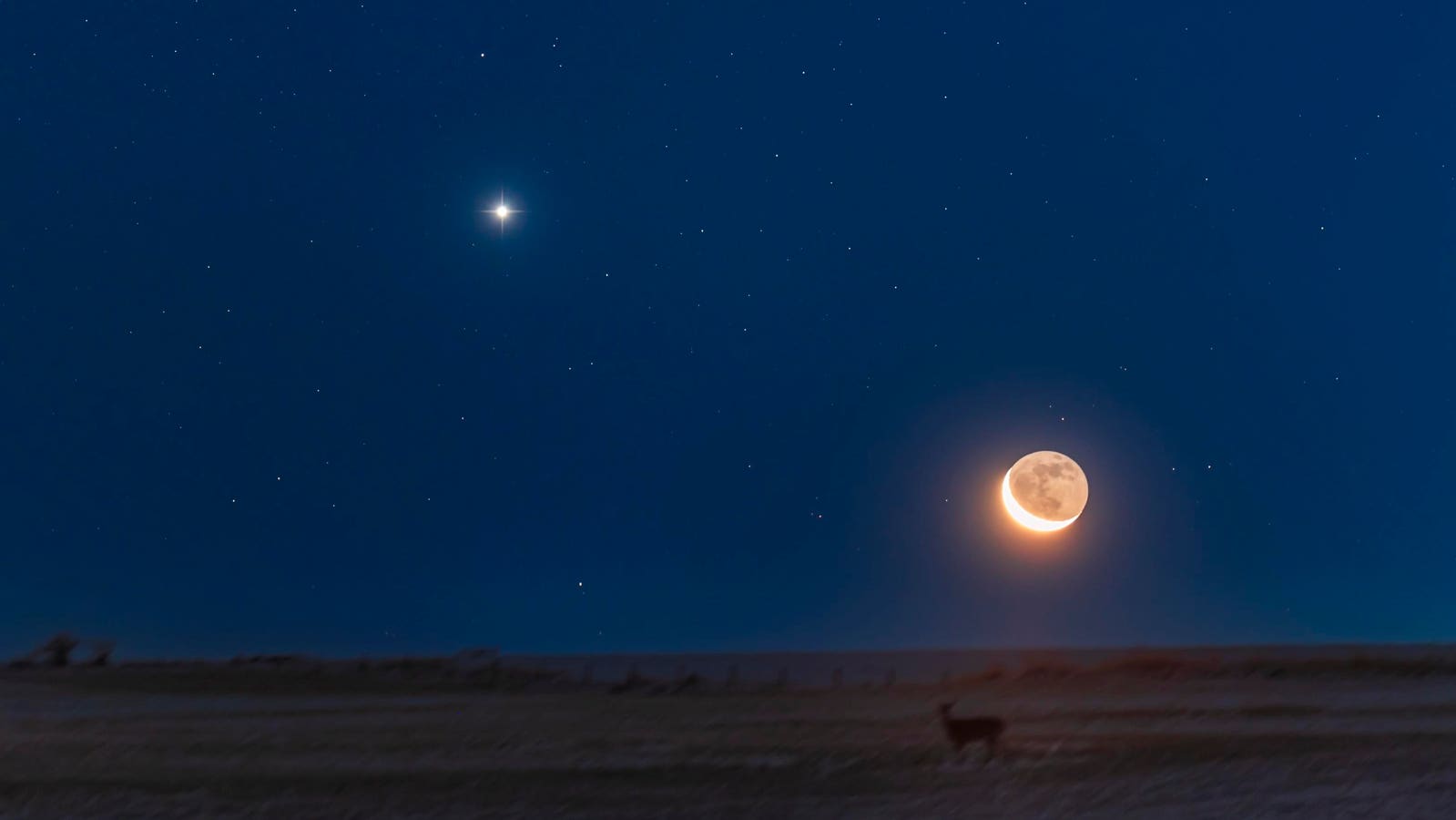Tuesday’s full strawberry moon occurs during two-year period known as the “major lunar standstill” … More
The full strawberry moon will put on a dramatic show at moonrise on Tuesday, June 10 — low, luminous, and colored orange as it climbs into the southeastern sky.
Get to an observing location that looks southeast — preferably low to the horizon — and at the specific time of moonrise where you are (during dusk), you’ll see the red-orange orb rise before your eyes.
Seen from the Northern Hemisphere, the full moon will rise far to the southeast, move across the sky close to the southern horizon, and set in the southwest close to dawn. It’s happening because we’re in the midst of a rare two-year period known as the “major lunar standstill” or “lunistice,” when a once-in 18.6-year event will create the lowest-hanging full moon since 2006 and until 2043.
Understanding The Moon’s Orbit Around Earth
Earth’s axis is tilted by 23.5 degrees with respect to the ecliptic, the path of the sun through the daytime sky, and, in effect, the plane of the solar system. That’s what gives us seasons, and that’s why planets are always found close to the ecliptic (hence the misused “planetary alignment” claims despite planets always being somewhat aligned with each other).
The moon’s orbit crosses the ecliptic twice each month, and when those crossings align with a new or full moon, eclipses can occur — hence the shared root in the words ‘ecliptic’ and ‘eclipse.’
While the sun’s rise and set points vary throughout the year, changing by 47 degrees — and reaching the extreme points at the solstices — the moon’s range is bigger, with that 5-degree tilt giving its rise and set points a 70-degree range near a major standstill, according to Griffith Observatory.
Mount Coot-tha Lookout, Brisbane
‘Major Lunar Standstill’ Explained
A major lunar standstill is a period when the northernmost and southernmost moonrise and moonset are furthest apart. Unlike a solstice (Latin for “sun stand still”), which lasts for one day, a major lunar standstill lasts for two years. These events are most noticeable during a full moon. Essentially, the swiveling and shifting orbit of the moon — a consequence of the sun’s gravitational pull — is tilted at its maximum angle relative to the ecliptic. Every 18.6 years, the tilts combine to cause the moon to rise and set as much as 28.5° north or south of due east and west, respectively.
Most people won’t notice the major lunar standstill, but if you regularly watch the full moon rise from a particular place, go there — you’ll get a shock when the moon rises at an extreme position much farther from where you might imagine it will rise.
How To Photograph The Full Moon Using A Smartphone
Imaging a full moon using a smartphone isn’t easy, but it is possible to capture something special. First, switch off your flash and turn on HDR mode (if available) to better capture both the moon and the landscape as the light fades during dusk. Don’t zoom in because digital zoom only blurs the details. Instead, frame the moon within a landscape for more impact, which is especially effective during this month’s unusually far-southeast moonrise. If you use a manual photography app, stick to an ISO of 100 for a clean shot and experiment with slower (but not too slow) shutter speeds. A tripod will help, especially when using slow shutter speeds. However, if you don’t have one, you can balance your phone on a wall or ledge.
The key is to image it when it’s low on the horizon and glowing orange. You’ve got a short window to capture that color, even with this low-hanging full moon, which will turn bright white as it lifts above the horizon.
Wishing you clear skies and wide eyes.









